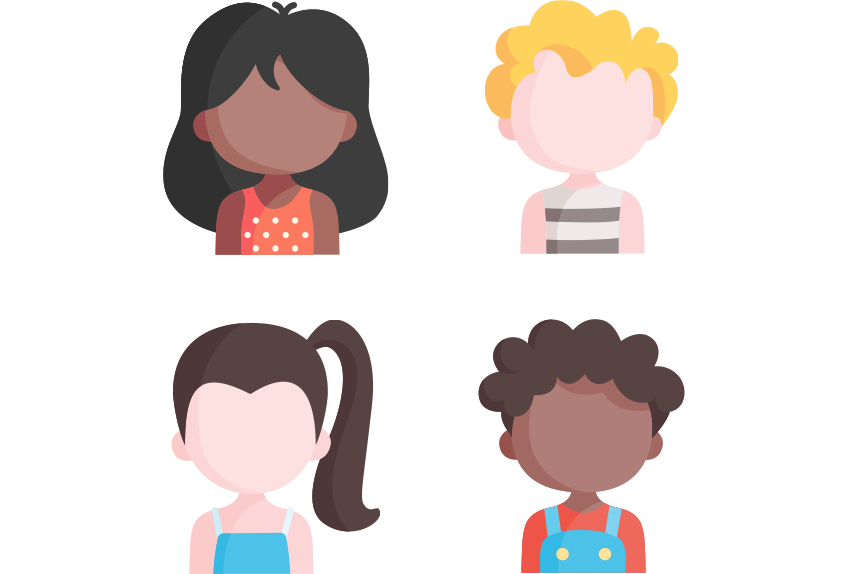Understanding
Food Insecurity
What Is Food Insecurity?

People are food secure when they have stable access to enough nutritious and culturally appropriate food to support a healthy and active life.
By contrast, food insecurity is the inability to access to food due to financial constraints. People who are food insecure may worry about running out of food, compromise on food quality or amount, or miss meals because of lack of money for food.
In Canada, 6.9 million people experienced food insecurity in 2021 1. One in four children are affected by food insecurity. The rate of food insecurity is substantially greater in remote areas of the country, such as Nunavut, where 46% of residents faced food insecurity in 2021 2. It is also a racialized issue, with Indigenous and Black households experiencing rates of food insecurity far higher than the national average. Finally, 50% of people aged 16+ living in a food-insecure household have a disability 3. There has been no decrease in food insecurity in Canada in the last decade and numbers are rising in some provinces 4.
Canada does not have a food shortage problem – but we do have a poverty problem. Lack of money to weather tough times and cover the cost of daily living is the single greatest cause of food insecurity. Other factors that make it worse include geographic location, physical accessibility, lack of social or community supports, poor health, and lack of knowledge of support services or understanding of how to access benefits.
Regardless of the underlying causes, the impact of food insecurity is devastating:
- Risk of chronic disease increases – food insecurity is associated with higher rates of diabetes, cardiovascular disease and other nutrition-related health issues 5.
- Health care costs rise – severely food insecure adults incur twice the healthcare costs of food secure adults – averaging $2300 more per year. Children who are living in food-insecure households make use of acute and outpatient healthcare services more often than those who are food secure 5,6.
- Mental health suffers – mental health problems are more common among people who are food insecure, while children who are food insecure are at increased risk for experiencing depression and anxiety 6,7.
- Loneliness is greater – food insecurity can result in social isolation and stigma, which in turn can worsen people’s ability to access food 8.
- Learning suffers – food insecurity influences childrens’ academic performance and may result in negative social behaviours at school 9.
Passionate community leaders, food experts and social impact organizations are demonstrating leadership and innovation to make a difference. Yet, given the direct link between poverty and food insecurity, public policy and national investments are essential. With the commitment to A Food Policy For Canada and the National Poverty Reduction Strategy, various levels and departments of government are moving forward.
We all need to work together to tackle this social and public health issue. We also need to work in ways that recognize the critical contribution of community and individual empowerment to systemic change. The Centre seeks to provide an important voice and support change in both these areas.
of people over the age of 15 living in food insecure households have some form of disability [3]

Footnotes:
- Statistics Canada. https://www150.statcan.gc.ca/n1/daily-quotidien/230502/dq230502a-eng.htm?CMP=mstatcan ↩︎
- Statistics Canada. https://www150.statcan.gc.ca/n1/daily-quotidien/230621/dq230621c-eng.htm?utm_source=mstatcan&utm_medium=eml&utm_campaign=statcan-statcan-mstatcan ↩︎
- Draws on data from the 2020 Canada Income Survey. This data was collected among adults 15 years of age and older through a subsample of the Labour Force Survey respondents and uses the food security component and the disability screening questions (DSQ). ↩︎
- PROOF (2023). New data on household food insecurity in 2022. https://proof.utoronto.ca/2023/new-data-on-household-food-insecurity-in-2022/ ↩︎
- PROOF. What are the implications of food insecurity for health and healthcare? https://proof.utoronto.ca/food-insecurity/what-are-the-implications-of-food-insecurity-for-health-and-health-care/#25 ↩︎
- Anderson et al. (2023) Household food insecurity and health service use for mental and substance use disorders among children and adolescents in Ontario, Canada. CMAJ. https://www.cmaj.ca/content/195/28/E948 ↩︎
- Ke and Ford Jones (2015). Food insecurity and hunger: A review of the effects on children’s health and behaviour. Pediatr Child Health. https://www.ncbi.nlm.nih.gov/pmc/articles/PMC4373582/ ↩︎
- Pineau et al. (2021). Exploring experiences of food insecurity, stigma, social exclusion, and shame among women in high-income countries: A narrative review. Canadian Food Studies. https://canadianfoodstudies.uwaterloo.ca/index.php/cfs/article/view/473 ↩︎
- Gallegos et al. (2021). Food Insecurity and Child Development: A State-of-the-Art Review. Int J Environ Res Public Health. https://www.ncbi.nlm.nih.gov/pmc/articles/PMC8431639/ ↩︎